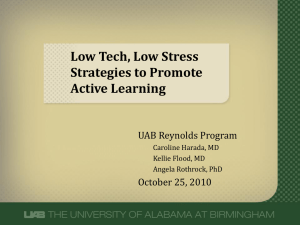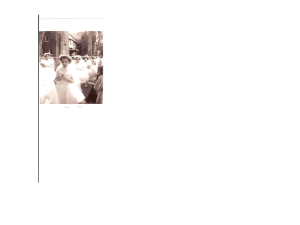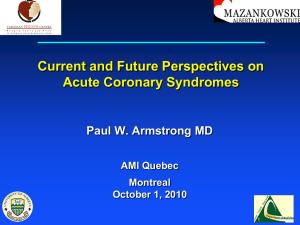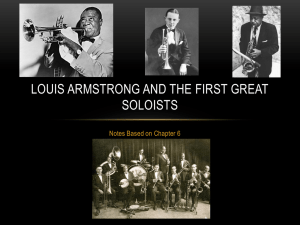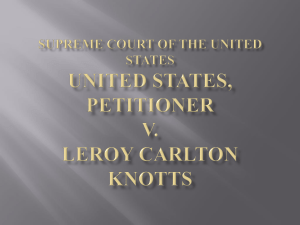The Fall of Lance Armstrong
advertisement
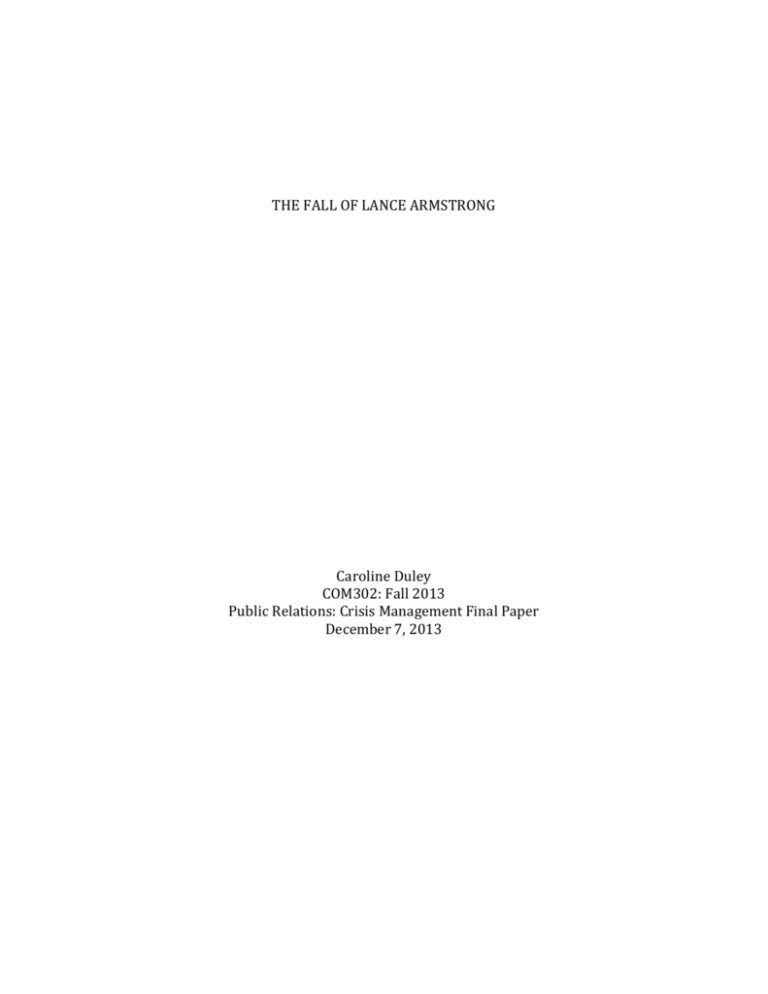
THE FALL OF LANCE ARMSTRONG Caroline Duley COM302: Fall 2013 Public Relations: Crisis Management Final Paper December 7, 2013 2 Abstract In this paper, I will argue the importance of ethical actions of professional athletes whom are covered by social media, drawing facts and ideas specifically from the Lance Armstrong doping crisis. Armstrong, like many other professional athletes, is tied to specific sponsors, foundations and other organizations, such as the Livestrong Foundation and Nike. When sponsored athletes act unethically and irresponsibly, the organizations tied them are also put at risk. In this light, I will analyze the effects of Lance Armstrong’s thirteen years of an unethical behavior, in route to seven Tour de France victories, and how this behavior negatively impacted not only his individual reputation, but also the reputations’ of all organizations associated with his name. With reputations constantly being put at risk, it is clear that ethical guidelines are needed to uphold the integrity of all industries involved. After analyzing the means to which the Livestrong Foundation and Nike dealt with Armstrong’s behavior, final implications indicate that as one single member of a larger group of united organizations fails to act honestly and appropriately, every member is affected and must implement a plan to manage the crisis. 3 From the late 1990s to the early 2000s, Lance Armstrong won the Tour de France a record seven consecutive times and became known as one of the world’s best road racing cyclists; however, with these outstanding winnings came along numerous doping allegations throughout most of his career. In October 2012, Armstrong was stripped from all seven Tour de France titles and banned from competitive cycling for life by the United States Anti-Doping Agency (USADA) for doping offences. Even after the hundreds of rumored claims, Armstrong continued to deny all allegations until a painful and partial confession interview with Oprah Winfrey in early 2013. Due to his continual denial and the lack of remorse in his partial confession, I will argue that Lance Armstrong failed to manage doping allegations ethically, tarnishing not only his individual reputation, but also the reputations of organizations affiliated with his name, including the Livestrong Foundation and Nike. A few years back, Lance Armstrong was one of the most famous athletes, not only in America, but throughout the world as well. With countless winnings, including seven Tour de France victories, Armstrong was considered the best cyclist in the world. However, being on top came with rumors and accusations of alleged drug use, all of which he denied for thirteen years. Along with these allegations, Armstrong dealt with a truly life-threatening situation in 1996, when he was diagnosed with testicular cancer that had spread throughout his brain and lungs. After multiple surgeries and extensive chemotherapy, Armstrong was pronounced cancer-free in February of 1997. This same year, he founded the Lance Armstrong Foundation – better known now as the Livestrong Foundation. Everything seemed to 4 be going great for Armstrong – he had beat cancer and founded what would soon be a billion dollar foundation, providing support for people affected by cancer. When doping allegations continued to follow him, Armstrong continued to deny them until he announced his retirement from competitive cycling in 2011. Coincidentally, Armstrong was also facing a US federal investigation based off of these allegations. After the USADA did their own investigation, though, he was stripped of all his wins and future involvement in competition. This year, Armstrong finally admitted to using performance-enhancing substances and offered his apologies. I argue that Armstrong, as an American athlete whom beat cancer, created a cancer foundation and won the Tour de France seven consecutive times, simply failed to realize his position in the public eye. Everyone was watching his every move, because all of these feats seemed too good to be true. In one aspect, he was considered a survivor and a hero – that was true. However, to be a seven time winning Tour de France cyclist as well? That was in fact, too good to be true. This puzzled and disappointed the entire public – the person that they had admired may have been a survivor and a hero, but he was also a liar and a cheater. The public watched his every move – with the Livestrong Foundation and Nike logos stapled to him in every aspect of his life. Due to the unethical actions of one individual, both of these incredibly large and successful corporate organizations were drawn into the media and forced to address and manage this crisis. To fully understand how crisis management impacts athletes and their corporate sponsors, it is important to understand the how the contemporary Public Relations world is inflated by social media. For instance, as stated by Timothy D. 5 Noakes in his article, “Tainted Glory – Doping and Athletic Performance,” the public relations industry must work with athletic industries to maintain the integrity of modern sports and ethical actions of the athletes whom perform in these professional sporting events. Not only do unethical actions pose a health threat to each individual, but they also pose a threat to the athletic industry. Because of this, the public relations world must do everything they can enforce ethical actions across the board. However, when ethical actions do occur, crisis management is a key component to whether these athletes and organizations to which they are tied to, sink or swim. This article relates the “tainted glory” of unethical performance to how athletes, whom are caught, successfully manage their unethical actions into an ethical and effective public message – covered on every social media platform. When crises do occur, it’s important to realize the ways in which sponsors and other organizations that are tied to this athletes name are affected. In this paper, I argue that as one athlete acts unethically, their sponsors and organizations are burdened with their own association in the athlete’s crisis. To do so, I utilized an article written by Professor Trevor Slack from De Montfort University, UK – “Studying the Commercialization of Sport: The Need for Critical Analysis.” In this article, Slack presents the idea of large corporate businesses teaming up with athletes to market and sell both the athlete and their product. By doing this, organizations take the risk of future crises and must have a plan for crisis management. If crises are not managed promptly, honestly and affectively, both athletes and sponsors and negatively impacted and subsequently fall. 6 Lastly, I drew important facts and ideas from a study by Hela Sheth and Kathy M. Babiak – “Beyond the Game: Perceptions and Practices of Corporate Social Responsibility in the Professional Sport Industry.” In this study, I examined the emphasis of a corporate social responsibility (CSR) put on athletes. Implications indicated were that professional sport executives view CSR as strategic and imperative for a successful business. Partnerships and ethical concerns are put at the top of lists for athletes, due to the fact that social media records every move professional athletes, their sponsors and organizations make. Social media can be detrimental to those whom act unethically; however, if utilized successfully, social media can also be a platform for effective crisis management. In this paper, I will use all three sources as platforms and resources to argue how effective crisis management is needed for both athletes, their sponsors and organizations to remain successful after any crisis occurrence. On January 14, 2013, Lance Armstrong reluctantly decided to come clean to the world in a so-called “no-holds barred” interview with Oprah Winfrey. As this news came out that Armstrong would finally come clean about doping, millions of Americans were hopeful to see a side of the superstar that no one had ever seen before: remorseful and apologetic. However, after the interview was aired, most of America seemed to be disappointed with Lance Armstrong’s overall attitude. Responses to the interview included descriptions such as “arrogant,” “distant” and “flippant.” In the interview, Oprah started off by asking simple, however seemingly painful, questions that everyone wanted the truth from: 7 “In all seven of your Tour de France victories, did you ever take banned substances or blood dope?” “Yes.” The interview went on by talking about why Armstrong did not simply just deny the allegations against himself, but he brazenly and defiantly denied everything for thirteen years. He also commented that he believed he deserved to be able to compete again, rather than being banned from competitive cycling for life. Overall, the interview did show a real emotional apology, but only a forced apology to say the least. Armstrong did not seem to fully understand the capacity of what he had done, nor did he fully disclose his infractions seen by one of the last questions Oprah asked: “When you placed third in 2009, you did not dope?” “The last time I crossed that line was 2005.” Days after Armstrong’s interview with Oprah Winfrey aired, the Livestrong Foundation issued a public response statement. The statement was short but to the point, stating that, “We at the Livestrong Foundation are disappointed by the news that Lance Armstrong misled people during and after his cycling career, including us.” They went on to say that Armstrong had apologized to the Livestrong staff and that the Foundation had accepted his apology and moved on into a strong, independent course. The statement stated that they are extremely grateful for Lance as a survivor and the drive and devotion that he brought to their foundation to help the entire cancer community. The statement clearly states that he will no longer serve on the Foundation’s board, however, they will forever recognize him as the 8 founder of the Foundation that has served millions whom would have died without their help. Overall, the Livestrong Foundation response focused more on the good rather than the bad, by using positive aspects of the Foundation as the framework for a negative, but necessary statement. On May 28, 2013, four months later, Nike released a public statement stating their separation from the Livestrong Foundation. The statement, similar to the Livestrong Foundation’s statement in January, stated that “Nike has made the decision to stop producing new LIVESTRONG product after its Holiday 2013 line. We will continue to support the Livestrong Foundation by funding them directly as they continue their work serving and improving outcomes for people facing cancer.” The statement did not once directly mention Lance Armstrong, however it is indirectly implied that the corporation has cut ties with him. It also showed that they would continue to support the Livestrong Foundation, even though Armstrong no longer serves on the Foundation’s board. Mid-November marked the most recent Sportsmail interview with Lance Armstrong, by the United States cycling team’s soigneur, Emma O’Reilly, discussing Armstrong’s doping charges. O’Reilly was in charge of feeding, clothing, massaging and escorting riders on the team – including Armstrong. Of course, Armstrong used this opportunity as an advantage to help reduce his life ban of competitive cycling. In the interview, he claimed that the former head of the Union Cycliste Internationale (UCI) knew about his drug use and encouraged him to cover up his doping. Armstrong stated that because of this, he was able to continue in the 1999 Tour de 9 France, despite his positive drug test. He even went into depth on prescriptions provided by the US medical staff, blaming them for being allowed to escape punishment. It was clear to Armstrong that his cooperation could be rewarded with a reduction to his lifetime ban, however, he stated in the interview that, “I’m not going to lie to protect these guys. I hate them. They threw me under the bus. I’m done with them.” In response to the interview, the head of the UCI wrote, “Cover-ups never took place. Not only would this never have been allowed, but there simply was nothing to cover up. Armstrong, nor his teammates, never tested positive.” Because it was been brought to Armstrong’s attention that with his cooperation could bring alone a reduction to his ban, the true facts will remain unknown to who was telling the truth: Armstrong or the UCI. Due to Armstrong’s previous lying record, fingers point to him; however, if cooperation and so-called “silence” would lead to a reduction to his lifetime ban, why wouldn’t he cooperate. He even stated in his previous “tell-all” interview that he believes he deserves to compete again – showing that with his competitive mindset, he would do anything to make that dream a reality. Drawing from both the Oprah Winfrey interview and Sportsmail interview, there are many similarities in ways that Lance Armstrong attempts to manage his individual “public face.” His scripts are similar in what he does and does not admit to, and his overall harsh and arrogant tone. In both interviews, he seems to blame the industry rather than himself. By doing this, he was able to give the public apology that America so badly wanted, though it was not willing or remorseful. Both interviews draw from the similarities of Armstrong using scapegoats, rather than 10 fully admitting fault and regret. It must be reminded that these allegations were not brought up just before his first interview; he had been accused of doping his entire competitive cycling career. He overtly denied every accusation for thirteen years, as he continued to win the Tour de France year-after-year. Due to this past, it would have made sense for Armstrong to finally come clean and tell the entire truth to the world; however, he was unable to do so. By displaying his naturally selfish and arrogant attitude in both interviews, Armstrong destroyed his public image. Though he did agree that what he did was wrong, he also believed his victories were not attainable without performance-enhancing drugs. As a former role model, this is a major issue due to the face that, “Today individuals, including adolescents, continue to employ a wide variety of drugs in the hope of improving their athletic performance and looking better” (Yesalis 1). In both interviews, Armstrong had the chance to repair his already tarnished public image by coming clean; however, instead of taking this more ethical route, he continued to point the finger at other people. Regarding both interviews and his previous track record with lying, Armstrong was disreputable in the way he managed the crisis. Major violations from the PRSA’s Code of Ethics include advocacy, honesty, independence and fairness. Based on advocacy, Armstrong represents himself as an individual former professional cyclist, the UCI as a member of the US cycling team, and the Livestrong Foundation as the founder of the cancer foundation. For thirteen years, and even in both interviews, Armstrong failed to act completely responsible for those he represented. In doing so, he not only risked hurting himself, but he also brought 11 down the integrity of the sport. This may have been expected of an amateur rider, but not a world-ranking professional. He was completely aware that “Performanceenhancing drugs pose a great threat not only to the health of users, but to the moral integrity and hence the continued relevance of modern sport” (Noakes 2), and he simply did not care. Armstrong targeted the UCI by saying they were involved in covering up positive drug tests and allowing him to race, and barely touched on the subject of being the founder of the Livestrong Foundation – All in an attempt to make himself look better. While he did admit to the most obvious accusations against himself, he was not completely honest in both interviews. He denied doping in 2009 in the Oprah Winfrey interview and stated that the UCI is responsible for allowing him to compete in the Sportsmail interview. All of this complicates what could have been the most ethical and logical way out of this crisis – to promptly come clean to all allegations and then be done with it. The negative media coverage and press response directly shows that he was not accountable for all of his actions. Though he did state that the UCI took part in covering up positive drug tests, he is still completely at fault for taking the drugs in the first place. Even if it is true that the UCI played a role, an ethical statement would have been, “Yes the UCI helped me cover-up my doping by allowing me to compete, however I should have known better in the first place, and therefore, it is completely my responsibility.” Lastly, unethical responses based on fairness include the way he responded to questions provided by Oprah. He did not fully admit to every allegation, especially one regarding doping during the 2009 Tour de France, where he finished third. Armstrong veered away from the initial question and did not answer whether or not 12 he used drugs for that race. Overall, I argue that due to this unethical route, Armstrong dug himself deeper and deeper into a tarnished public image – an image that could have been partially repaired if he were to take the ethical route. These interviews may have worked to repair his image if there weren’t a countless number of allegations and evidence against him; however, because of this overwhelming amount of proof, Armstrong’s unethical route in handling the crisis forever tarnished his public image. These interviews, and primarily the initial Oprah “tell-all,” led to public statements from The Livestrong Foundation and Nike. Both statements are similar in their content, addressing doping issues pertaining to Lance Armstrong in a concise way. Additionally, after a few sentences, they both bring the attention back to their specific companies, rather than discussing Armstrong as an individual. Livestrong and Nike end on positive notes about their corporations – Livestrong closes by mentioning the tremendous amount of people that they have helped battle cancer, while Nike ends by celebrating the amount of money that their products have raised for cancer research and support services. In managing their public images as they relate to Armstrong, Livestrong specifically addresses Armstrong as no longer being on the Foundation’s board, while Nike simply says that they would no longer produce new Livestrong products after their Holiday 2013 line. Though these differences may seem large, they correctly reflect Lance Armstrong’s role in each organization. He was the founder of Livestrong; therefore, it was necessary for them to address his involvement in their foundation. Also, since Nike sponsored him and the foundation, it was important they state how their company was severing ties 13 with both Armstrong and Livestrong because of his doping admission. I argue that these organizations acted ethically in their statements and actions after Armstrong’s admission in the Oprah interview. However, because of the numerous prior allegations against Armstrong, they acted unethically by not further investigating the claims, in order to avoid damaging their reputations by allowing it to continue. Based on the PRSA’s Code of Ethics, both Livestrong and Nike’s statements are ethical, but their actions before each of their statements were far from ethical. Since Armstrong was the founder of Livestrong, the foundation had a responsibility to recognize the issue, as advocates for Lance Armstrong. However, in their statement, they do not once talk negatively about him; rather, they state that, due to his actions, Armstrong will no longer serve on the board. The Foundation was ethical not only by addressing the painful, but also by stating that without Armstrong’s contribution, the organization would not exist – meaning that they gave credit where credit was due. Nike went about this a bit differently, but still ethically. Days following Livestrong’s statement, Nike severed ties with Livestrong products in their own statement. However, in doing so, the company acted as ethical advocates by acting responsible crediting the amount of money raised, due to Armstrong’s contributions. Based on expertise, both Livestrong and Nike acted ethically and responsibly, as the knowledgeable and experienced organizations that they are. As large organizations, they needed to keep their credibility by recognizing the issue athand, and responding to it. If they had not issued public responses to Armstrong’s doping charges, their credibility and consumer image would have been tarnished. Due to their timely responses to Armstrong’s initial interview, these organizations 14 were able to stay creditable and uphold their respectable reputations. The last major ethical contribution of both organizations deals with loyalty. In both statements, Livestrong and Nike attempt to recognize their past relationship with Armstrong while still honoring their obligation to serve the public interest. They both are grateful for what he has done; however, they understood that the only ethical way to act after his confession was to no longer support him, based off his illegal actions. While these previous points support the organizations’ ethical actions, they can also be used to demonstrate their unethical actions leading up to their public statements. Livestrong and Nike both supported Armstrong through years of alleged allegations, which were clearly justified with an overwhelming amount of support. Due to this, neither organization acted ethically based on advocacy, expertise and most importantly loyalty. They kept faithful to Lance Armstrong, but completely disregarded their obligation to serve the public interest. It was not until after his direct confession did these organizations release public statements. This selfish behavior was unethical because they failed to recognize or believe in any of these allegations. Neither organization wanted address any allegations until they were absolutely forced to when Armstrong confessed – By not acting quickly, these organizations tarnished their public images as creditable sources. Once Livestrong and Nike realized that they absolutely had to address the public, they gave brief, yet ethical statements and have acted in ethical manners since. Through the mixed use of both ethical and unethical actions, I argue that both Livestrong and Nike failed to manage the crisis in a completely appropriate 15 manner. However, by changing course from an unethical to ethical route, quickly after Armstrong’s initial interview, control the damage to their public images. On the other hand, Armstrong’s reputation was not so fortunate. Due to his arrogant and distant attitude, Armstrong further tarnished his public image. It can be inferred through this crisis, that the sport industry, and in fact all industries dealing with deviant behavior, must create and follow guidelines to address similar situations. Such guidelines are the only possible way to promote ethical actions and lower the effects of crises. By providing an ethical framework for representatives of their companies, these organizations would likely reduce similar crises. However, that does not mean that a crisis management team will no longer be needed. It is evident that no matter how many guidelines industries implement, crisis management plans will always be needed for when the unexpected inevitably occurs. 16 Bibliography Lawton, Matt. “Lance Armstrong World Exclusive: Cycling chiefs helped me cheat! Disgraced star’s explosive new drug claim rocks sport.” 2013. McLane, Katherine. “Official Statement from the Livestrong Foundation.” 2013. Nike. “Nike Statement on Livestrong.” 2013. Noakes, Timothy. “Tainted Glory – Doping and Athletic Performance.” 2004. Sheth, Hela. “Beyond the Game: Perceptions and Practices of Corporate Social Responsibility in the Professional Sport Industry.” 2010. Slack, Trevor. “Studying the Commercialization of Sport: The Need for Critical Analysis.” 1998. Telegraph Sport. “Lance Armstrong’s interview with Oprah Winfrey: The Transcript.” 2013. Yesalis, Charles. “Doping among adolescent athletes.” 2000.

